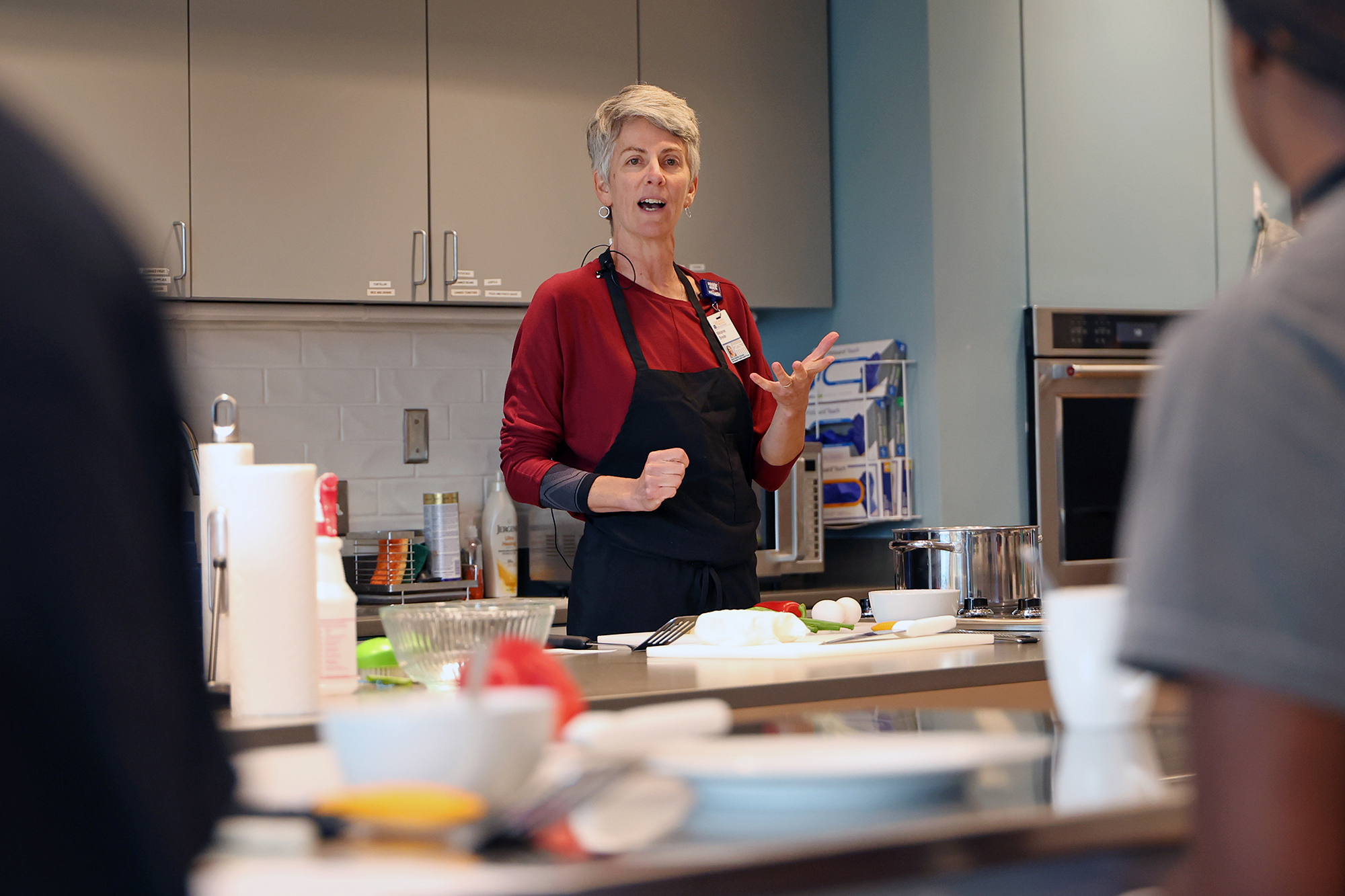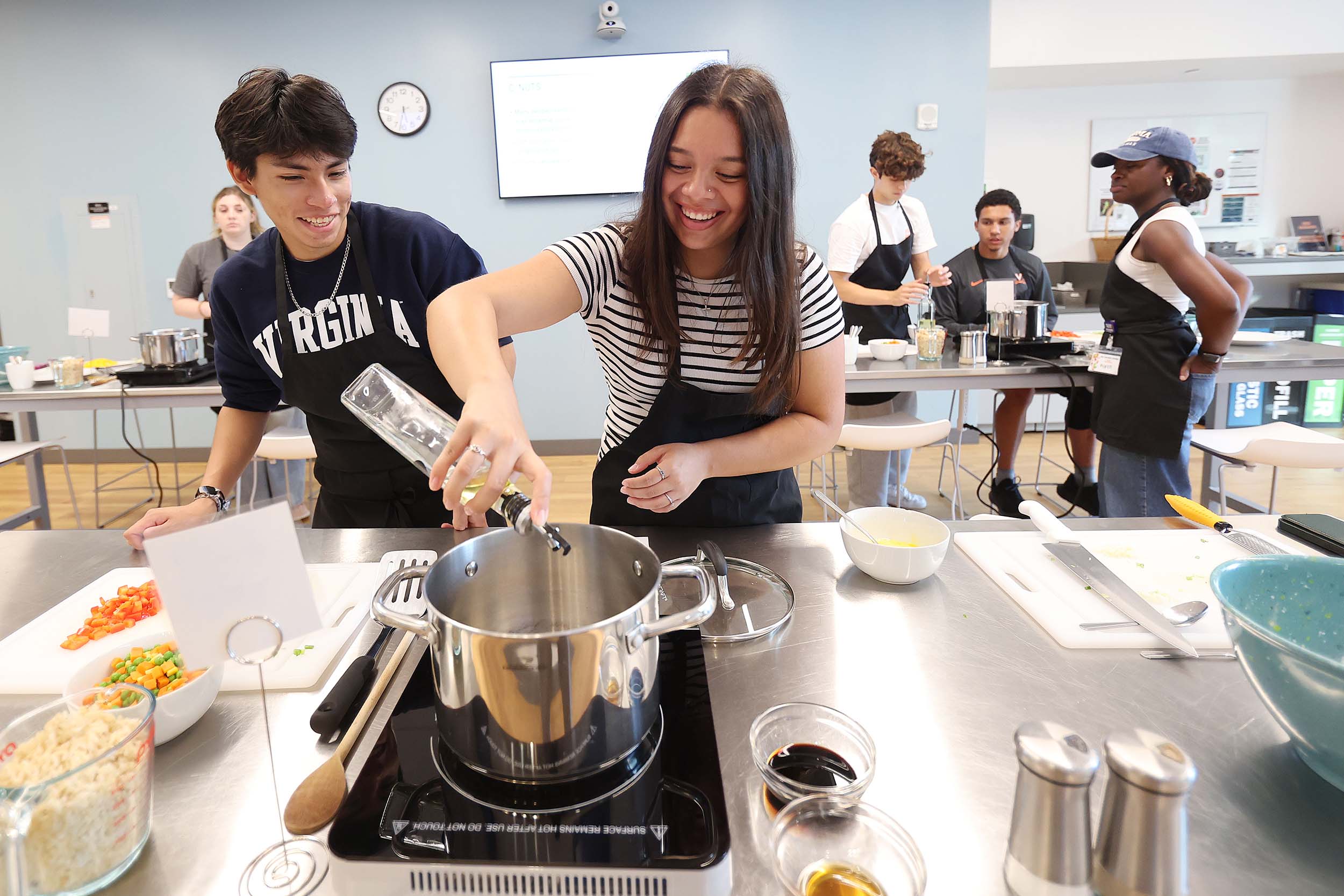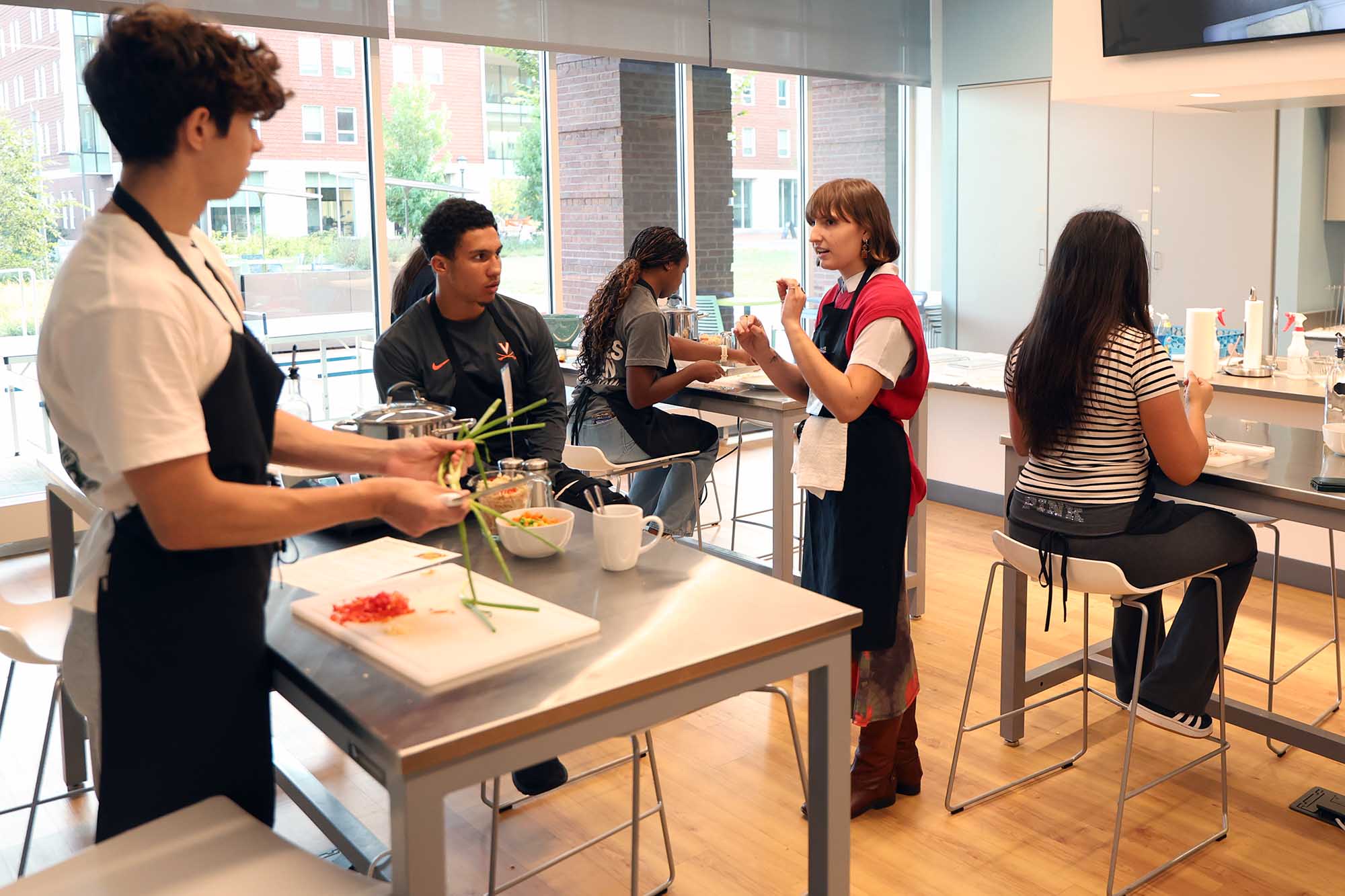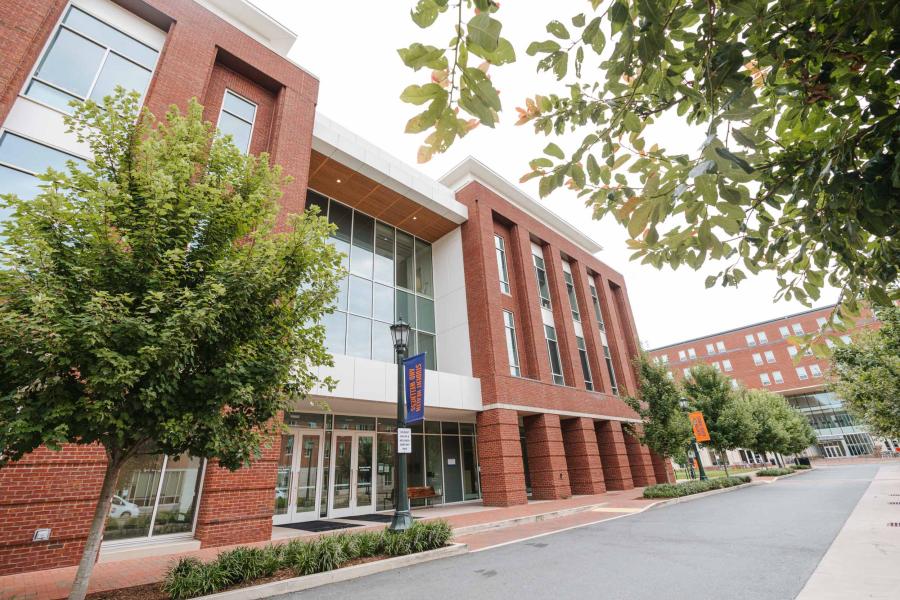The aroma of soy sauce and sesame oil filled the University of Virginia’s Student Health and Wellness building on a recent Thursday evening as a dozen students gathered for a vegetable fried rice night.
It was part of the teaching kitchen’s “Pick of the Pantry” series, a cooking class where shelf-stable ingredients – the same items available in Student Health and Wellness’s free food pantry – become the foundation for nutritious, budget-friendly meals.
Students minced garlic, grated ginger, diced bell peppers and cracked eggs into sizzling pans, turning pantry staples into complete meals.
“I’ve looked into taking cooking classes around Charlottesville, but none of them are graduate student budget-friendly,” second-year graduate student Gwen Wagner said. “It’s a very accessible cooking class.”
Melanie Brede, a registered dietitian and director of the teaching kitchen, leads the program. She’s made addressing food insecurity part of her mission.
Vegetable Fried Rice
Makes: 4 servings, 1.25 cups per serving
Ingredients
- 2 cloves garlic, minced (or 1 tsp jarred minced garlic, or ¼ tsp garlic powder)
- 1 tsp fresh ginger, grated (or ¼ tsp ginger powder)
- 1 red bell pepper, diced
- 4 green onions, sliced
- 2 large eggs*
- 2 cups frozen peas & carrots, thawed (or any frozen vegetables)**
- 2 tbsp cooking oil, divided
- 2 cups cooked and cooled rice
- 3 tbsp soy sauce
- 1 tbsp toasted sesame oil
Additions/substitutions:
* Eggs: 1 cup frozen, shelled edamame or 1 block of extra firm tofu (drained and pressed, then cut into 1” cubes) can be used in place of or in addition to eggs
** Vegetables: Instead of frozen vegetables, 1 cup (½ can) vegetables (drained) can be substituted
Instructions
- Prepare the vegetables beforehand so they’re ready to go when needed. Mince the garlic, grate the ginger, dice the bell pepper, slice the green onions (separate the green ends from the white ends), and measure the frozen vegetables.
- Lightly whisk the eggs in a small bowl. Heat a large skillet over medium. Once hot, add 1 tbsp of cooking oil and swirl to coat the surface. Add the eggs and gently scramble until cooked through. Transfer the cooked eggs to a clean bowl or plate.
- Turn the heat up to medium-high and add 1 tbsp of cooking oil. Next add the bell pepper and the white, firm ends of the green onions. Cook and stir for one minute more. Finally, add the vegetables and stir and cook until heated through. Transfer the vegetables to a clean bowl or plate.
- Add the remaining 1 tbsp of cooking oil to the skillet and swirl to coat the surface. Add garlic, ginger, and the cooked and cooled rice to the skillet. Stir and cook for about 2 minutes, or until the rice is heated through.
- Pour the soy sauce and toasted sesame oil over the rice. Stir the rice and sauce together until evenly combined.
- Add the eggs and vegetables back to the skillet with the rice and stir to combine. Top with the remaining green ends of the sliced green onions. Taste and adjust the soy sauce or sesame oil to your liking.

Melanie Brede, a registered dietician, directs the teaching kitchen, where she plans recipes and class sessions and often teaches classes herself. (Photo by Matt Riley, University Communications)
“(College) is a transition time for many people,” Brede said, noting that for many students, their second or third year in school marks the first time they are living independently and responsible for their own meals.
“The trend overall is that people aren’t coming to school already having a lot of experience with food preparation,” she said.
In the last decade, the awareness of food insecurity among college students has increased, according to Brede. “It’s one of those things that there can be a lot of stigma and shame around.”
Student Health and Wellness responded on multiple fronts. The fourth floor of the building houses the Cavalier Food Pantry, stocked with shelf-stable items like canned and dry goods, as well as fresh produce, available free to any student who needs it.
But Brede wanted to go further than simply providing food.
“We have dedicated staff collaborating on building resources that connect the food pantry to our cooking classes,” she said. “We focus on ingredients that are shelf-stable and long-lasting, so we can connect the food itself to the skills of being able to prepare it and turn it into a meal.”











